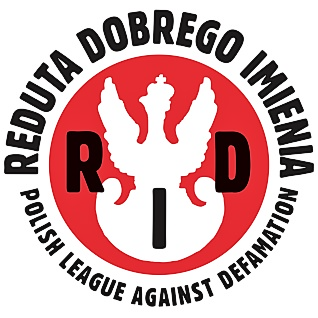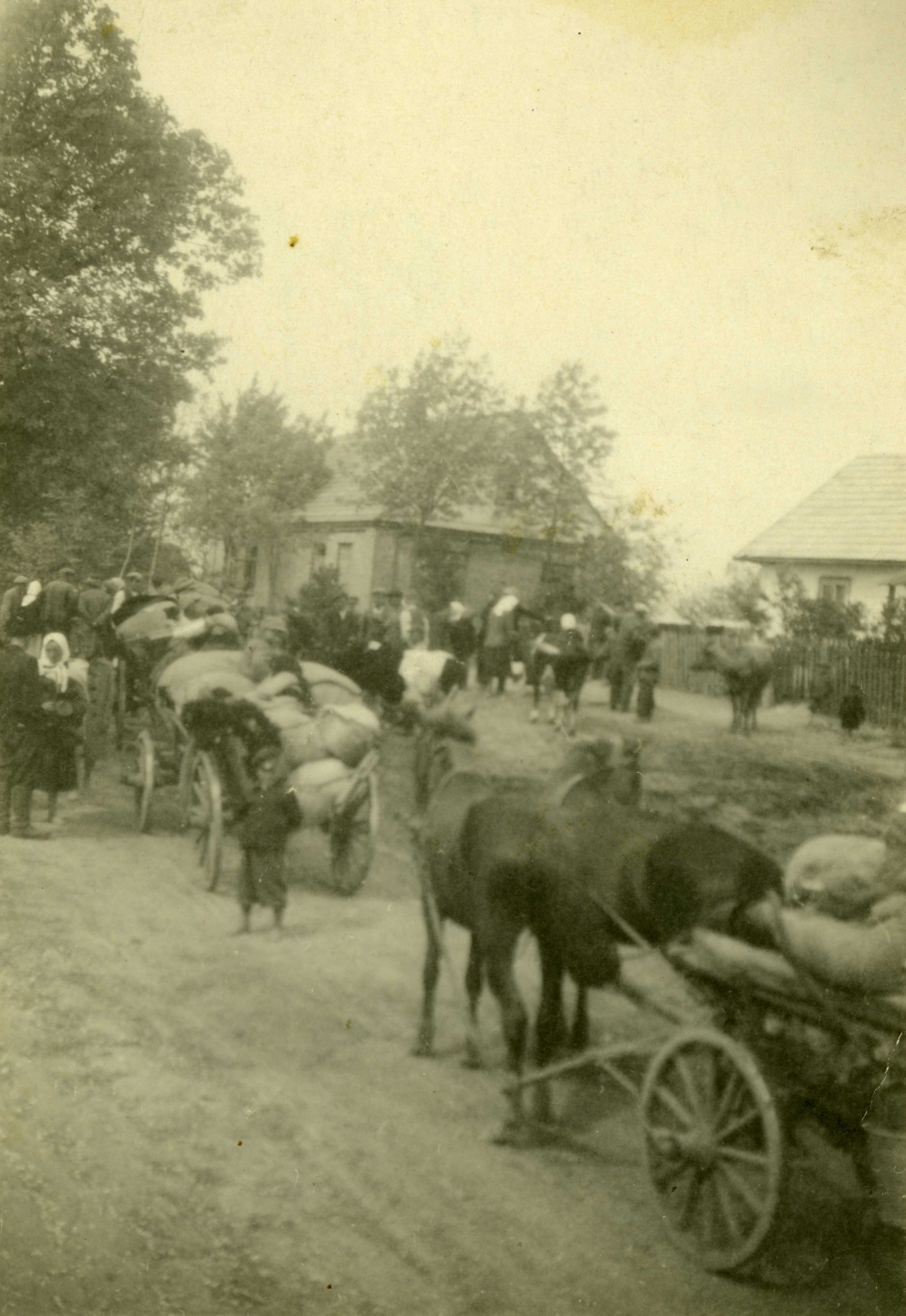„Aktion Zamosc”
Jerzy Karlinski, one of the witnesses of the terrible events that took place in the Zamosc region in 1942-1943, recalled: "The deportation of Poles from their residences took place in such a way that at dawn the gendarmerie surrounded the village and all the roads leading to it, then entered each individual house, from where, with a threatening shout of "fate!" and pushing with rifle butts, whole families were thrown out into the streets, from where they were then taken to the camp in Zamość in peasant carts. Residents were allowed to take only the most necessary things, while the better parts of their closet or larger food supplies were confiscated on the spot. I saw the terrible pain and helpless rage painted on the lips of the peasants, who were forced to leave all their possessions and go behind the wires of the camp. [...] The place of the displaced Poles was taken by German colonists. They arrived with their families, armed with rifles and dressed in identical black uniforms, from which the population contemptuously began to call them 'blacks.' These Germans, in confidential conversations, did not hide their dissatisfaction with their arrival in Poland, since some of them were wealthy people who had left considerable property in their previous places of residence. A special institution called "Siedler-Wirtschaftsgemeinschafts" was set up to supply the new settlers with food, clothing and necessary household items; naturally, all this came from the looted belongings of the murdered Jews."
Karlinski talked about what began in earnest on the night of November 27-28, 1942, in the village of Skiebieszow and surrounding villages. At that time the Germans launched a resettlement operation in four districts of the Lublin district: Bilgoraj, Hrubieszow, Tomaszow and Zamosc, which went down in history under the code name "Zamosc."
Under cover of darkness, German forces surrounded a selected village and then drove all residents from their homes. Those Poles who tried to put up any resistance, hide from the Nazis or escape during transport were murdered on the spot. The rest had to pack up in a very short time. They were then sent to a transit camp in Zamosc, and German colonizers arrived to take their place, occupying the houses according to the instructions of the SS settlement staff.
The Zamosc camp itself was a terrible place, where cold, hunger and disease were the order of the day. Its first commandant was SS-Unterscharführer Artur Schültz - a former boxer and common thug who enjoyed abusing prisoners.
Kazimiera Dołba recounted years later how the first moments in this place unfolded: "[...] they led us to the first barracks. [...] The camp commander came to us and said that we were to go one by one with our families to the doctors. [...] We undressed to the waist and approached them one by one [...] We placed our hands on the table, and they looked into our eyes, ears, and hands. They gave cards to parents, and we went to the next barracks. [...] They started separating children from parents, and that's when hell broke loose on earth. [...] Children held onto mothers' hands, skirts; they returned, mothers cried. And the enraged Germans shouted, 'Take them away because if I give you 25 lashes, you'll drop dead right away.' [...] The children still returned, and they pushed and rejected them. [...] They led the children to barracks number 9 – A and B. [...] In the evening, we wiped the floor with rags and a broom, and everyone laid some rags on the floor [...] and that's how we slept. [...] I went once to the other nine. There was no floor, and when people brought snow in with their shoes, it turned into mud. I went with my mom to barracks number 16, [...] it was a horse stable: there were no windows in the walls [...]. There was no floor either, only earth. What saved them was that there were shelves made of boards, and children sat on those shelves. [...]."
In Zamość, Poles were categorized into four groups: I – Germanized Poles, destined for re-Germanization, II – Poles who could be Germanized, III – individuals fit for work, IV – others, including children under fourteen, older individuals, and the sick. In this last group, Germans introduced additional categories. People were divided into those intended for deportation to KL Auschwitz and those, mainly children, who were to be Germanized.
The entire operation described above was supervised by the Chief of the SS and Police in the entire General Government, Friedrich-Wilhelm Krüger, and directly led by the previously mentioned Globocnik, who collaborated in this field with the German Resettlement Headquarters in Łódź. This institution specialized in resettlement actions and organized such operations in the years 1940-1941 when thousands of Poles were resettled from the Wartheland to the General Government.
The "Aktion Zamość" lasted from November 1942 to August of the following year and unfolded in three phases. The first phase concluded very quickly, already in December 1942. At that time, around ten thousand Poles were expelled from about sixty villages in Zamość. However, the Germans were not satisfied with this and decided to continue the operation in the second phase, which began in January 1943 and concluded two months later. During this phase, the Nazis managed to expel nearly forty thousand inhabitants. Additionally, an important element of those events was the execution of the so-called Ukrainian operation, involving the settlement of Ukrainians in the places vacated by expelled Poles. This naturally increased tensions between these two nations, a result that the Germans sought, well aware of the strained relations between the conflicting parties.
The final phase of "Aktion Zamość" lasted from June to August 1943. During this time, about sixty thousand people were ejected from their homes. This part of the discussed operation was characterized by the greatest brutality and ruthlessness towards the Polish population, as well as towards the Polish underground, which began to defend its compatriots, leading to the outbreak of the so-called Zamość Uprising at the turn of 1942 and 1943.…
…
"Aktion Zamość" was formally concluded in August 1943. It was an example of a crime, one of many that the Polish nation experienced under the German occupiers. The latter, driven by a perverse ideology, committed acts that were unheard of in the civilized world. Nevertheless, many of them never faced punishment for their wartime actions.
The key figures in the described operation, namely Himmler, Krüger, and Globocnik, all escaped justice by taking their own lives. The architect of the General Plan East (GPO), Konrad Meyer, was also not held accountable. He was only tried for his membership in the SS. Jakob Sporrenberg, the successor to Globocnik as the head of the SS and Police in the Lublin district, faced legal consequences. He was sentenced to death, executed in Mokotów Prison in 1952. (He shared a cell with the hero of the Polish Underground State, General August Emil Fieldorf "Nila"). The infamous Artur Schütz also evaded accountability as he perished in Lorraine. Additionally, the head of the Resettlement Headquarters in Łódź, Hermann Krumey, faced problems, but only years later. It must be acknowledged that few Germans received the deserved punishment for the suffering of over a hundred thousand Poles from the Zamość region, including children.




